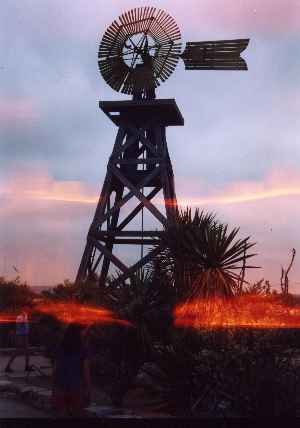
Longhorn Ranch
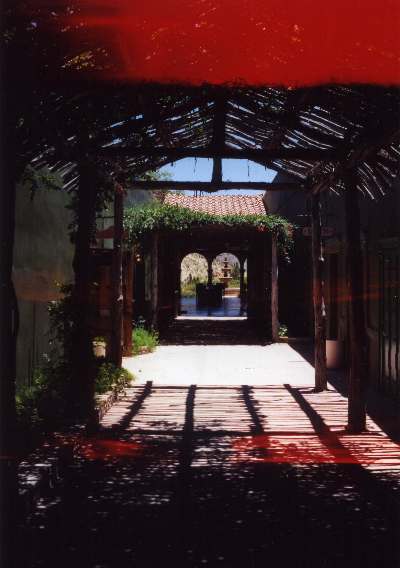
| Route 66 | Cities | Beaches |
 |
Longhorn Ranch |
 |
|
The Chisos Mountains and the Chihuaha Desert are wonderful, but they're not all of Big Bend. You also have to explore the Western side, the TexMex strip of Lajitas, Presidio, Terlingua and Study Butte. You won't be camping over there. There are no campgrounds. The National Park Service is debating a lodge and campground, but it's at least five years away. In the meantime, we recommend The Longhorn Ranch. You'll stay in motel style rooms, enjoy a swimming pool, eat great breakfasts in the restaurant, and meet Betty. Betty alone is worth the stay. Although Louisiana born, she's been here long enough to become an authentic member of this isolated, eccentric but starkly beautiful country. She'll be your host, but she's more like your favorite Aunt. While you're eating breakfast or relaxing by the pool, Betty can help you plan your day, and fill you in on the history and folklore of local people and places. |
You need two days and two nights to fully experience this side of the park. That first day, you'll drive over, check in, take a dip in the pool and shower after all those days hiking and backpacking. That night, drive over to the ghost town of Terlingua and eat at the Starlight Theatre. There's a whole evening here. Terlingua is the most spectacular ghost town in the American West. It once housed 3500 people, most of them men here for the Cinnebar mine. Lacking trees, they built the town in classic adobe style. It occupies a whole hillside. Today, most of the buildings are in various stages of decay, but a few have been preserved or restored, and a hundred or so are undergoing restoration right now. The most spectacular is the Main Street complex which includes the Trading Post and Starlight Theatre. If you wander around the streets, you'll recognize scenes from various Western movies, especially those supposedly set down in Mexico. |
 |
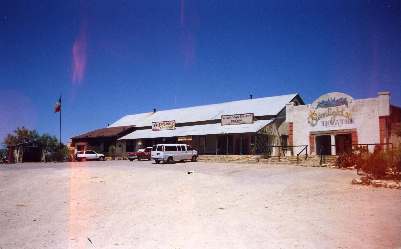 |
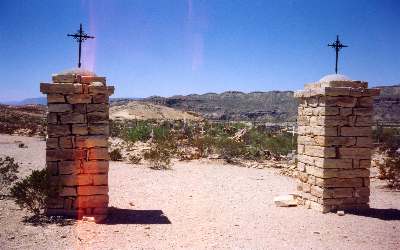 |
|
The graveyard is sad but offers some dramatic photo opportunities. Most of the men buried there died in their 30s. Doctors in town suspected some pollutant, and were frantically testing to find out what. They tested water for microbes and chemicals. They tested food, soil, adobe bricks, whiskey and even clothing. They could not pinpoint the poison. They were right. But what they never thought to test was the Cinnebar. Cinnebar is the raw ore from which Mercury is obtained. The men were dying from Mercury poisoning. Today, the graveyard is a classic scene of adobe monuments, the site of an annual Day of the Dead holiday. The homes in town are in bizarre condition. Housing is difficult to find in the area, and many people have been granted permission to take possession of a ruin. The old houses are in various stages of repair, some of them quite impressive, some mere hovels. |
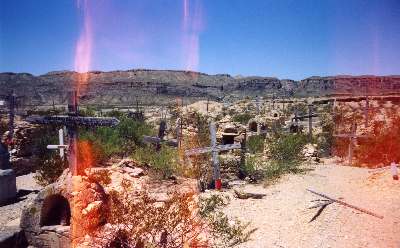 |
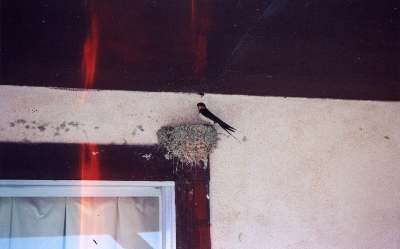 |
The old church and school are worth a hike up the hill. But by far the highlight of your stop will be the Trading Post and the Starlight Theatre. The Trading Post is a classic tourist gift shop, with some good buys. If you're looking for a classic Western hat, the ones here were the best we saw on our two week trip. The Theatre really was the original town performing arts center, with an interior you'll want a few flash pictures of. And you'll remember the food long after you've returned home. Out here in the middle of nowhere, they have a gourmet menu, large helpings and delicious tastes. After a week of freeze dried food, it was wonderful, but we struggled to finish our portions. Back at the Longhorn Ranch, we took a swim under the big sky with thousands of stars blinking down, sat by the pool, and listened to Betty tell us more stories about Terlingua and Lajitas. You've already met a hundred or so Roadrunners. At the Longhorn Ranch, you'll meet Split Tailed Swallows, beautiful but tiny critters that nest over doorways and windows. Male and female both sit on the eggs, one bird facing one direction, one the other. If you come close to a nest, the birds will fly off, circle about 30 yards and return in less than a minute. |
The next day we canoed the Rio Grande through Santa Elena Canyon. You'll see advertising about rafting the river, but don't believe it. The Rio Grande today is a shadow of its former self. A 13 year drought, and water sucked out by a growing El Paso and Presidio, the Lajitas development, and a hundred new Mexican factories have shrunk this once mighty river to a few feet deep and 20 feet across, with frequent sandbars and shallows. You would spend more time pulling rafts than paddling them. But canoes can still make it, and the Santa Elena Canyon is spectacular. It's one of the five deepest canyons in North America, with 1500 foot cliffs reaching straight up from water's edge. And unlike the severe whitewater runs through the other canyons, this placid Class I flatwater can be navigated by inexperienced students. You'll paddle for three hours, then stop on the Mexican side for a side hike and lunch prepared by your guide. Another three hours of paddling concludes your day. The basic charge for this trip for Scouts or youth groups is $100 per person. That's the most expensive canoe trip we've heard of, but with a group of a dozen or so during the June off season you can negotiate. |
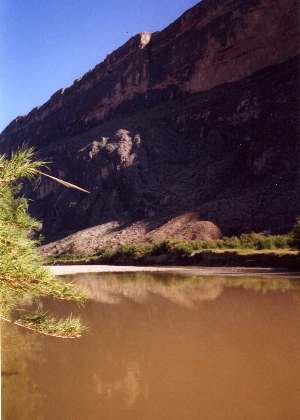 |
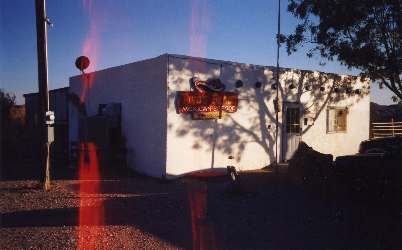 |
On the way back to the Longhorn Ranch, you have another eating adventure. Look for Tivo's, a small white adobe building on the right (east) side of the highway. It only holds six tables, so you may have to wait for a while, but Tivo's is one of America's top 10 Mexican restaurants. Tivo came to America to work for a local silver mine. When the concessionairre did not renew its contract, Tivo and his wife began supplying lunches for the workers. One thing led to another, and eventually they opened their own restaurant. Their chips and salsa, made fresh daily, are the best we've ever tasted. The Chile Rellenos are among the top three (along with The Adobe Grille in Flagstaff and Casa Rios in San Antonio). The Quesadillas are a top five entry. And Tivo's is not expensive, so it will easily fit within your budget. |
|
For breakfast back at The Longhorn Ranch, Betty and her kitchen staff whip up a fine stack of pancakes or Texas Omelettes, and the coffee's pretty good, too. There's no telling which local characters may wander in while you're eating. Cowboys, miners, oil or water drillers, motorcyclists, country music icons, local business men, border patrol agents, artists, writers, professional snake hunters, photographers, paleontologists, archaeologists, college professors with classes on tour, desert backcountry guides, and Hollywood types in town for another local movie, all drop by, often with a welcoming hug for Betty. Note the guys at right with their laptop computer. The Old West adapts to the 21st Century. Your final day in this country should be busy. First, you should stop at the Warnock Educational Center, just outside of Lajitas. This is primarily a natural history museum with displays and activities concerning the plants, animals and rocks of Big Bend. It has one of the finest cactus collections in the world. Second on your schedule should be Doug Barnes' paleontology site. On the left (east) side of the road on your way to Lajitas, this is where Barnes and several students have been unearthing dinosaur bones and assembling them into complete skeletons inside the large airplane hangar sized building. Recently, they found the complete Pterodactyl skeleton. |
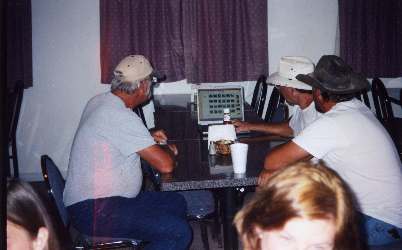 |
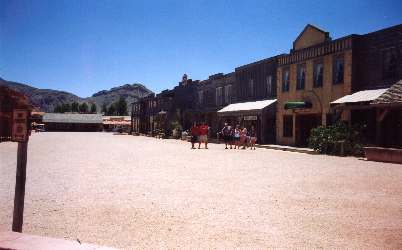 |
Which brings you to Lajitas. The town is the center of the biggest controversy in Big Bend. Lajitas was the old Mexican border town where Hollywood filmed so many of its classic Westerns. Since it was right on the Rio Grande, the old rafting companies were headquartered there, as were several restaurants and numerous shops. But Nextel President Steve Smith bought the town --- the whole town --- and created a vision for an Old West resort. He restored the old Main Street, converted the bordello and Cavalry Post into lodging, built a golf course and airport, and forced out the rafting companies, restaurants and shops in favor of more upscale boutiques, restaurants, a saloon, and upstairs condos. Willie Nelson was one of the first condo buyers. |
|
The trading post, around the corner from Main Street, is a classic, with Sarsparilla and other Western beverages, Mexican and Southwestern food items, and even an old fashioned ice cream counter. On a hot day, the rocking chairs on the big front porch are a great place to enjoy that beverage and ice cream cone. Past Lajitas, heading toward Presidio, you'll climb The Big Hill, and drop into another famous movie set, where Lonesome Dove and many of John Wayne's films were made. When not in use, you can park along the road and explore the set. It's interesting to walk into some of the buildings and notice how each wall is a different backdrop, so they can film four locations by simply revolving the camera. It'll be mid day by now, so on your way back, stop one last time in Terlingua, this time pulling into Traci's just downhill from the graveyard. If possible, introduce yourself to Traci, another authentic local character. Traci is the daughter of a former diplomat, who is apparently on speaking terms with half the famous people in the country. Her food ranks right up there with Starlight Theatre and Tivo's, but the menu is quite different.
|
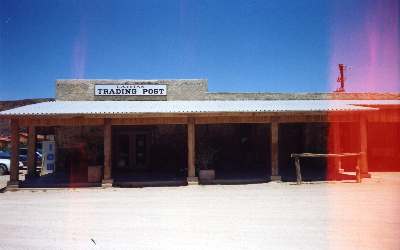 |
|
|||
|